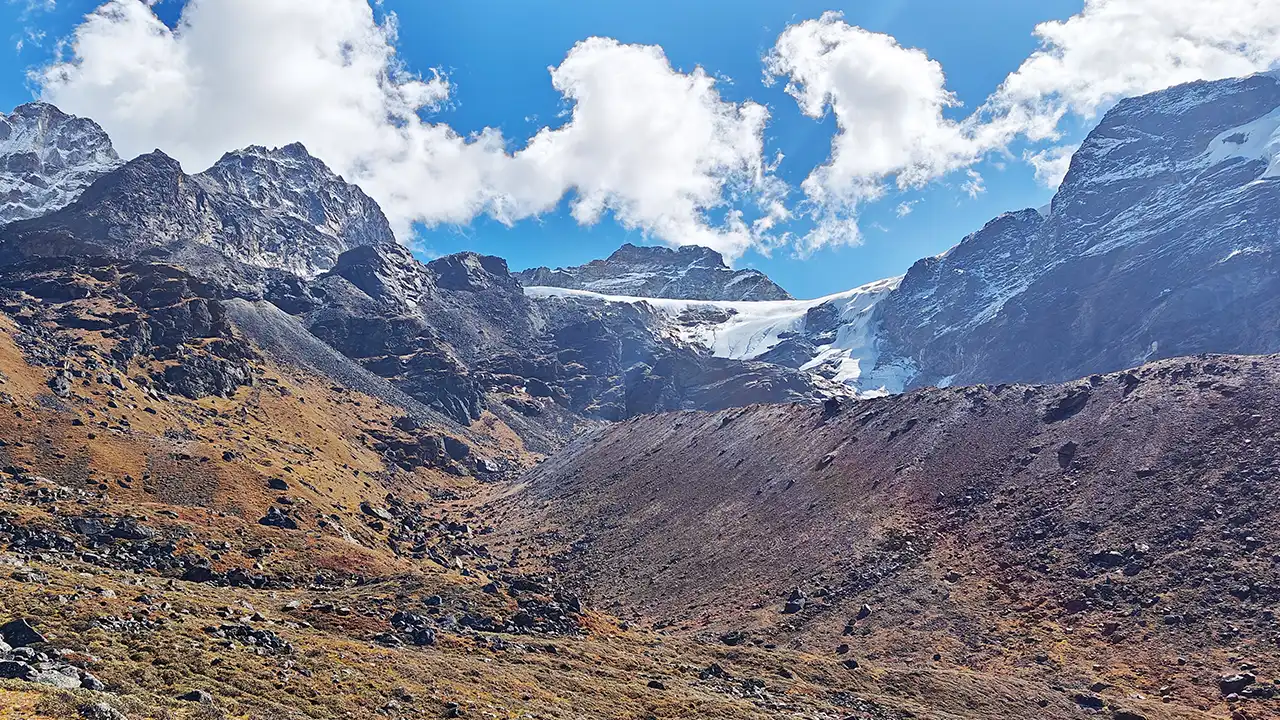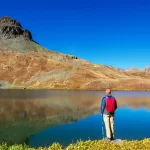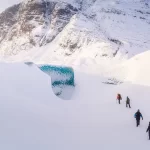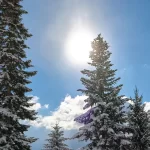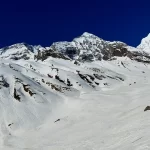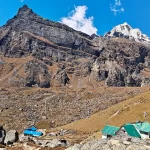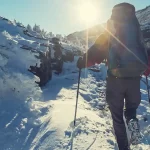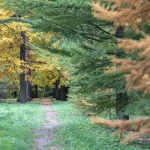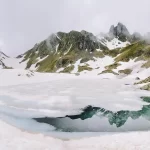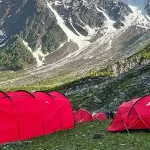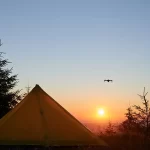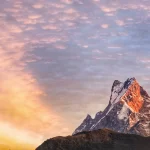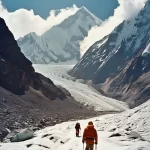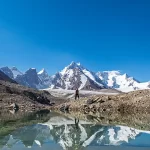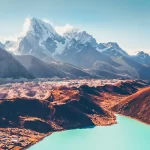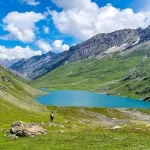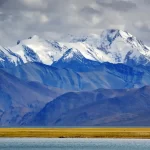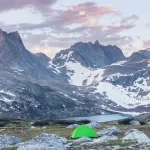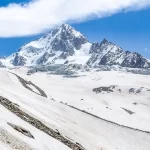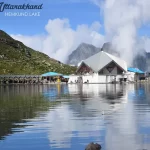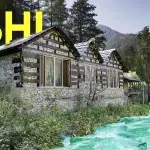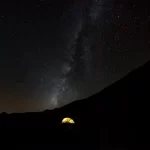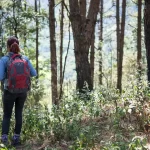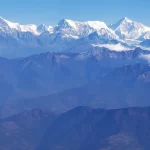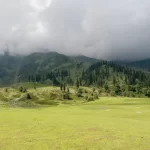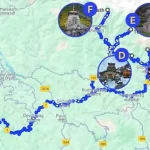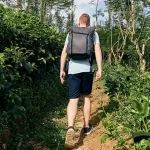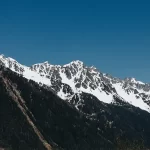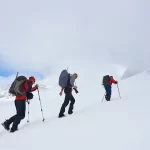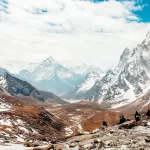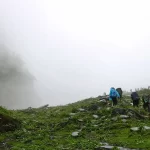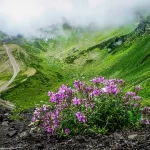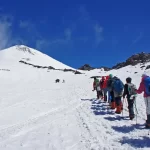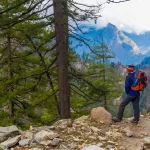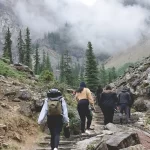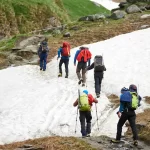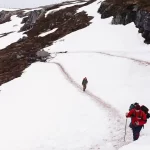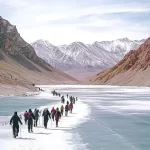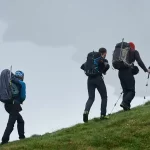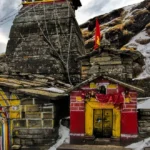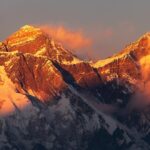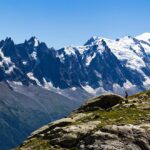There are treks that demand your attention, but Kuari Pass doesn’t. It softly captures your heart. This track, which was originally walked by Lord Curzon, is tucked away in Uttarakhand‘s Garhwal region. It takes you through windswept meadows, whispering woodlands, and a high mountain pass that opens up like a magnificent Himalayan stage.
And what a stage it is. On a clear day, you’ll see giants: Nanda Devi, Dronagiri, Kamet, Hathi-Ghoda, Trishul all rise like silent gods above the clouds. If there’s a trek in Uttarakhand that feels both regal and reachable, it’s this one.
Why Choose the Kuari Pass Trek?
Because it’s panoramic without being punishing, spiritual without being scripted, and scenic from day one. Kuari is perfect for beginners ready for a challenge, and for seasoned trekkers who just want to walk in beauty. It’s one of those rare trails in Uttarakhand that gives stunning views almost every single day – no long waiting, no dull stretches. The gradual gain in altitude makes it smooth, and the route is sprinkled with campsites that look like they were made for postcards. Bonus: You walk part of the Curzon Trail, one of the oldest British-era trekking routes in India.
Trek Highlights
- Kuari Pass Summit (3,650 m): A wide, open mountain pass with an unforgettable Himalayan skyline.
- Gorson Bugyal: Massive alpine meadows that feel like nature’s own balcony, especially beautiful in spring and after snowfall.
- 360° Peak Views: The India’s second-highest Nanda Devi, spotted over 15 snow-capped peaks is the worth to take a view.
- Charming Campsites: Tali, Gulling, and Khullara each campsite has its own rhythm, aura, and scenic signature.
- Forest Trails: Deodar, oak, and rhododendron forests wrap around you like quiet green cathedrals.
Trek Itinerary Overview
Day 1: Drive from Rishikesh to Joshimath (10–11 hours)
Start early and drive past Devprayag, Rudraprayag, and the Alaknanda valley. Rest overnight in the lively mountain town of Joshimath.
Day 2: Joshimath to Gulling via Dhak Village
A short drive to Dhak, then begin your trek. The trail climbs gently through village paths and oak forests to reach Gulling campsite.
Day 3: Gulling to Khullara
A slightly steeper ascent through thick forests. The tree line begins to fade, giving way to views of the peaks. Khullara is a wide clearing quiet, crisp, and close to the stars.
Day 4: Khullara to Kuari Pass and back (via Tali)
Start early. The trail climbs gradually with switchbacks before finally opening up to the majestic Kuari Pass. Spend time soaking it all in, then descend to Tali Forest Camp for the night.
Day 5: Tali to Joshimath via Auli
The descent continues through meadows and forest paths. You’ll cross Gorson Bugyal and end at Auli. Drive back to Joshimath.
Day 6: Drive to Rishikesh
A long but scenic drive back with Himalayan memories packed in your soul and SD card.
Difficulty Level and Preparation
Grade: Easy to Moderate
No technical skills needed, just good stamina and comfortable walking ability. Perfect for first-timers with basic fitness.
Training Tips:
- Walk 5 km daily for 3 weeks prior
- Add stair climbs to build leg strength
- Stay hydrated and practice deep breathing altitude is real here
Best Time to Visit
- Spring (March–May): Rhododendron blooms, fresh green bugyals, pleasant temperatures
- Autumn (Sept–Nov): Crystal-clear views, dry trails, golden light
- Winter (Dec–Feb): Snowy landscapes, magical campsites, quieter trails
- Avoid Monsoon (July–August): Landslides, leeches, and heavy rainfall make the trek risky
Permits and Guidelines
Permits are required as the trail lies within the Nanda Devi Biosphere Reserve.
You’ll need:
- Valid ID proofs
- Forest entry permits (handled by most trek organizers)
- Responsible trekking ethics: no littering, no loud music, no plastic
- Support local staff, use biodegradable soaps, and carry your waste down it’s their home, your trail.
Accommodation and Essentials
Stay:
- Joshimath: Budget hotels and guesthouses
- On trek: Tented campsites with sleeping bags and mats (provided by trek organizers)
Essentials to Carry:
- Layered winter wear (thermals, fleece, down jacket)
- Trekking shoes with ankle support
- Reusable water bottle, UV filter or tablets
- Headlamp, power bank, snacks
- Basic medicines and sun protection
Kuari Pass doesn’t shout. It whispers. Through wind brushing the meadows. Through snow crunching underfoot. Through the calm that hits you when you sit at the summit and realize you’ve arrived, not just at a place, but in a moment. It’s a trek that gives you space to breathe, to think, to reconnect. Whether you’re walking to get away or walking to get closer to something inside Kuari Pass welcomes you with open skies.

